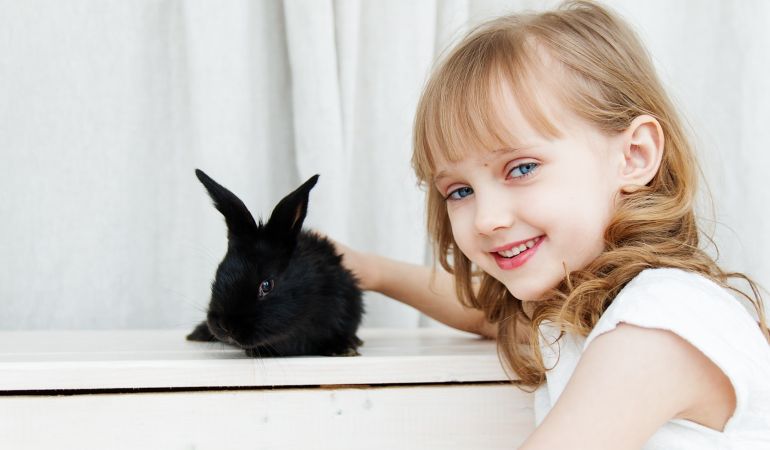
Rabbits are one of nature’s cutest bundles of fluffy joy, watching them frolic and twitch their little noses can bring a smile to the faces of even the grumpiest of us. Their overwhelming cuteness, fluffiness, and inquisitive nature have captured the hearts of many. This coupled with the fact that they’re trainable makes them good pets
As we all know, moving house is one of the most stressful events in a person’s life despite us understanding what is happening. Throwing pets into the mix further compounds that stress, but few people spare a thought for how their pets are coping with the massive changes in their lives and routines. Particularly pet rabbits, as you probably know rabbits do not take stress well.
Stress in rabbits can lead to several health problems and even cause heart failure and death. So, it’s incredibly important to make sure your furry friend doesn’t get too stressed when moving house.
Thankfully, there are steps you can take to reduce your stress and anxiety when moving house with a pet rabbit.
Table of Contents
A few facts about bunnies
As prey animals, our adorable little long-eared friends are incredibly sensitive to the smallest of changes in their environment. Their inherent delicate nature may be useful for avoiding predators in the wild, but for domesticated rabbits, the upheaval of their safe environment can be an anxiety-inducing bunny nightmare. Did you know that pet rabbits can live up to 12 years, some even longer? A pet rabbit is not a short-term commitment for sure.
Add in the fact that rabbits are creatures of habit which flourish in familiar environments, where they can also develop a daily routine and it’s easy to see how a house move could be a bunny-traumatising experience. Did you know there are over 1 million pet rabbits in the UK based on a study done in 2021? We can only imagine their number has grown this year, so a lot of fluffy bunnies are bound to move house at some point.
Signs of stress in pet rabbit
You need to look out for signs that your rabbit might be stressed before and after the move is complete. Here are some common signs of stress in rabbits to keep an eye out for:
- loss of appetite
- aggression towards you, other animals, or kids
- lethargy which can also include loss of appetite and weight loss
Preparations for moving house with a pet rabbit
The success or failure of ‘Operation: Calm Bunny’ depends entirely on how well you prepare for the move beforehand, and moving house with a rabbit requires a lot of preparation if you don’t want to have a fluffy bundle of trembling anxiety on your hands.
- Designate a rabbit-safe zone. Ideally, this will be the area with their little house, toys, and litter box. If you schedule a packing service, make sure you relocate the rabbit to a safe room where the packers won’t go.
- All of your packed belongings should be kept elsewhere and the status quo of the safe zone shall be maintained for as long as possible. When the professional house movers arrive they shouldn’t enter in the rabbit zone so your pet doesn’t get scared.
- Make sure that you have a secure cage suitable for travelling. Ensure that it’s big enough for your little friend to be comfortable but not so big that they slide around inside. The cage door must also be secure, the last thing you want while driving to your new home is a scared rabbit bouncing off of every available surface and dropping faeces or peeing in your car.
- Rabbits are especially sensitive to heat. The only way they can regulate their body temperature is by sending blood through their ears. When they start to get too hot the blood vessels in their ears expand, as more blood passes through the ears it’s gradually cooled and sent to the rest of the body. So while travelling try to maintain an interior temperature of between 10C and 24C to keep the little ball of joy happy.
Book Fantastic Removals for a fast and easy relocation!
Enter your postcode to view our rates and availability in your area.
For questions about the services we offer visit our main site or you can always call us at 020 3746 0584
How to move house with a pet rabbit
The journey to a new home is one filled with excitement as well as stress, you’re tired and constantly worried about if you have forgotten anything.
Adding a pet into this mix only adds to the stress, most animals may find the trip uncomfortable but it’s still a terrifying and fun experience (think of how a dog reacts as it tries to figure out how to travel by car). Here are key tips on moving house with a pet rabbit:
- Make sure that your rabbit carrier is secured before setting off for your new home, bunnies generally don’t appreciate sliding dangerously across car seats.
- As mentioned previously, rabbits are quite sensitive to changes in temperature so make sure the carrier is placed in the shade and if it’s a hot day turn the air conditioning on.
- Try to drive as smoothly as possible, rabbits can’t anticipate motion so sudden acceleration or stop abruptly can cause unnecessary distress.
- If you’re travelling by plane, check out if the airline is pet-friendly and what the conditions are.
- Check-in on your little furry friend from time to time, and make sure the fluffball is comfortable and not showing signs of overheating or stress such as seizures and weakness.
- When you arrive at your new abode, keep the rabbit in the carrier for a little while and refill water and food for them. This will give your buddy a chance to calm down and overcome the driving experience.
How to help the rabbit adjust to the new home
After such a terrifying experience, the car trip, your rabbit friend would like nothing more than to curl up somewhere they feel safe. This can be problematic in a new house as the rabbit is suddenly in a new and unfamiliar environment, it doesn’t smell like home, and that shadow looks suspiciously like a predator.
- Make sure the property is the appropriate temperature for the rabbit and not too hot or too cold. Keep water in a couple of rooms in the beginning, your fuzzy friend will need it.
- Give your bunny a few days to truly feel at ease in an unfamiliar environment. Over time your fluffy companion will adapt to your new home but there are steps you can take to make this process easier.
- Pick out an area and make it a ‘rabbit-safe space’. As prey animals, rabbits like to have a safe place to hide, eat, and sleep. Place the cage, or carrier, in a suitable area and designate it ‘the rabbit zone’. This will become your little friends’ new safe house they can escape to when daily life is too overwhelming.
- Keep your rabbit’s belongings in, or around, their safe space. Keeping food and water, toys, and everything else that your rabbit owns in ‘the rabbit zone’ will help to keep the little critter calm as well as reinforce that this is home now.
- Wait for the movers to leave and for you to finish moving around boxes and making too much noise and then you can let the rabbit out to inspect the new place.
- Introduce the fluffy explorer to the house room by room. Once your rabbit has adjusted and is eating normally, it’s time to introduce them to the rest of the house. Take your time and let the little house-bunny explore each room, in turn, return the tiny adventurer to their cage in between exploring rooms so that they know where to run to if spooked.
- Give them time and space. Regardless of what you do, your whiskered sidekick will still need time to adjust and all you can really do is be patient and give them space to come to terms with their new world.
- Try to arrange their bed or cage and food and water bowls in the same way they were in your old house.
- Find a reliable vet near your new home, if you worry that your rabbit may show symptoms of stress in the first couple of days after your move, go to the vet.
Rabbit-proof the new place
It’s important to have the place bunny-proofed before you let them explore. Here are some things you can do to safely let your rabbit hop around their new home:
- Remove dangerous or poisonous plants from the property.
- Do not leave exposed wires or cables in easy-to-reach places.
- Put stoppers under and behind appliances to prevent the rabbit from getting stuck or nibbling on the cables.
- Set a fence for rooms you don’t want the rabbit to enter.
- Do not leave out things like boxes, or packing materials from your move around where the animal can find them and eat them.
Takeaways
So there we have it, your guide to moving house with a pet rabbit. All you need to do is plan ahead with rabbit welfare in mind, drive carefully, and be patient as they adjust to the new house. Hopefully, you follow our tips and manage to move house with your pet rabbit without any stress.
Did we miss anything? Do you have any tips for moving house with a pet rabbit? Let us know in the comments below or give us a shout on social media!
Check also:


 (8 votes, 92.50 % )
(8 votes, 92.50 % )











